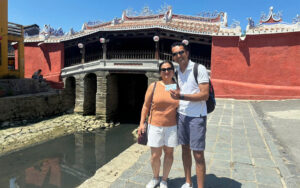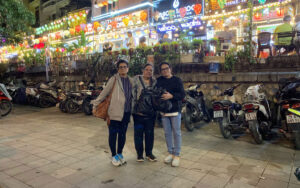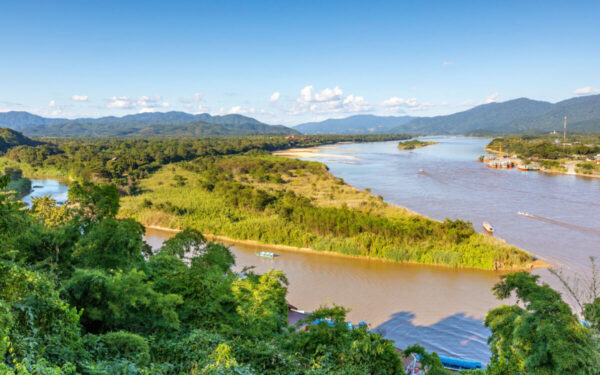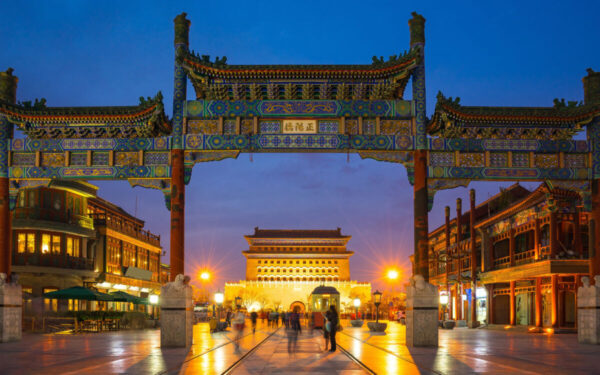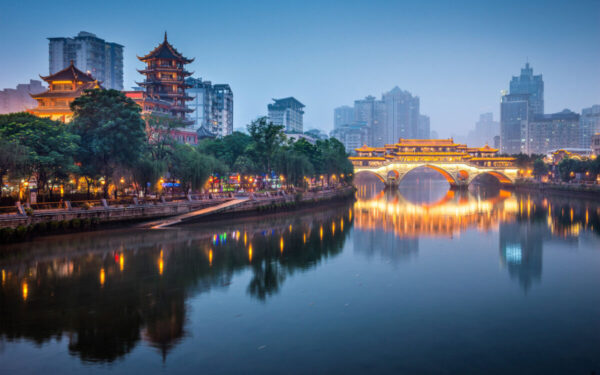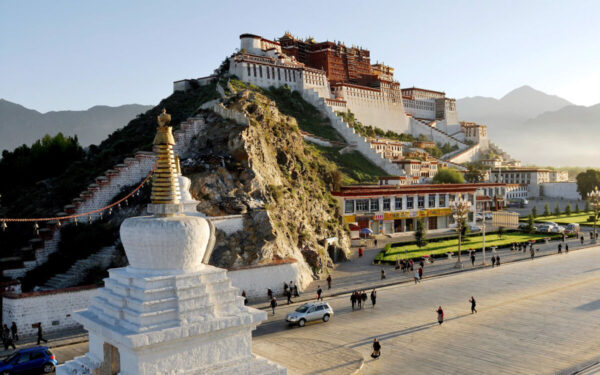The Red River, or “Sông Hồng” in Vietnamese, is one of Southeast Asia’s most significant and storied waterways. Spanning 1,149 kilometers from China’s Yunnan mountains to Vietnam, it has shaped history, culture, and livelihoods along its course. Many wonder, “The Red River flows from China into which country?” The answer is Vietnam, where the river becomes a lifeline for millions, providing water for agriculture, industry, and daily life. This article of Asia Legend Travel looks into the journey of the Red River, from its beginnings in China to its profound impact on Vietnam.
The Red River Flows from China into Which Country?
One of the most intriguing geographical questions is: the Red River flows from China into which country? The answer to this question is Vietnam. Originating in the mountains of Yunnan Province, the Red River begins its journey through the rugged terrains of China before crossing the border into northern Vietnam. The river’s name is derived from the reddish-brown silt it carries, which gives the water its distinctive hue. This silt is rich in nutrients and plays a crucial role in the fertility of the lands it irrigates, particularly in the Red River Delta, Vietnam’s agricultural heartland.

Understanding the course of the Red River is essential in appreciating its significance to the countries it traverses. The river’s journey is not just a physical one; it is also a journey through time, history, and culture. The Red River flows from China to which country is not just a question of geography but one of cultural exchange and shared heritage between China and Vietnam.
The Red River’s Entry into Vietnam
After leaving China, the Red River flows southward into Vietnam, playing a vital role in the country’s geography, economy, and culture. The river meanders along the Vietnam-China border for about 80 kilometers before officially entering Vietnam in Lao Cai province. From there, it winds its way through the northern region, traversing several key provinces including Yen Bai, Phu Tho, Vinh Phuc, Hung Yen, Ha Nam, Ninh Binh, Thai Binh, and Hanoi. In Hanoi, the capital city, the Red River is more than just a waterway; it’s a symbol of the city’s rich history and ongoing development. Hanoi, often referred to as the “city of the river,” owes much of its existence and growth to the Red River.
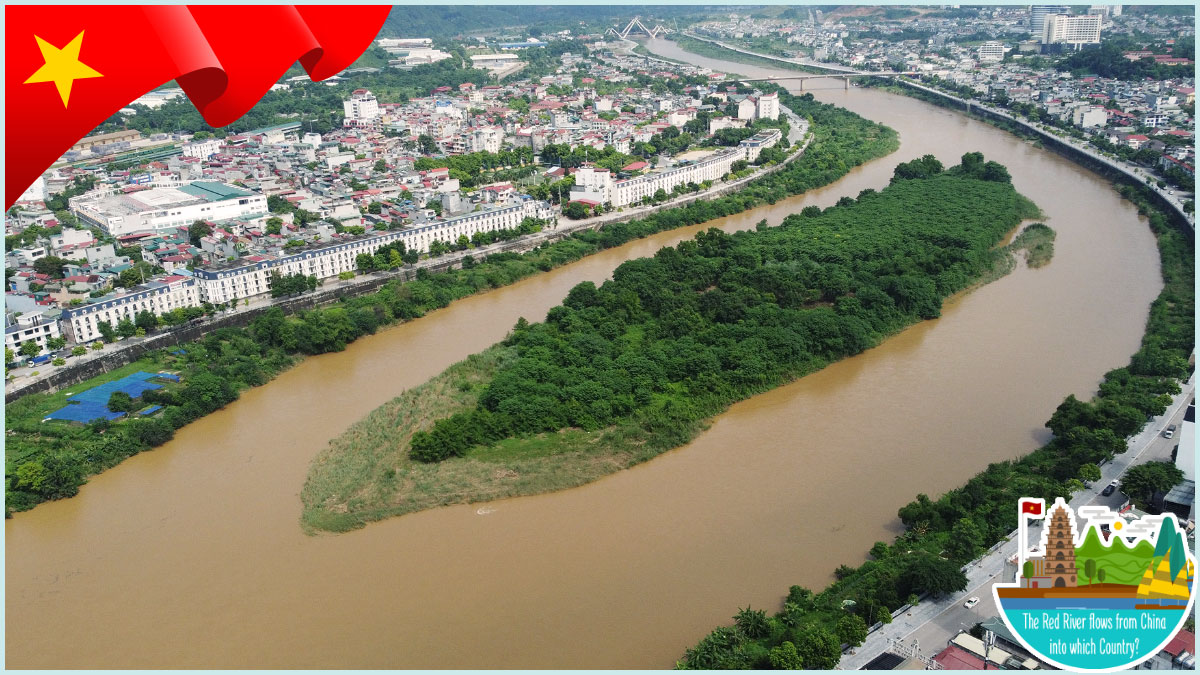
The river’s journey into Vietnam is marked by a series of twists and turns, creating a network of tributaries that feed into the larger Red River Delta. This delta is one of the most fertile regions in Southeast Asia, thanks to the nutrient-rich silt deposited by the river. The Red River’s entry into Vietnam is not just a geographical event; it marks the beginning of the river’s role in shaping the country’s agricultural and cultural landscape. The question of the red river flows from china into which country leads directly to an exploration of how this river has become so integral to Vietnam’s identity.
The Red River Delta: Vietnam’s Rice Bowl
As the Red River flows deeper into Vietnam, answering the question “the Red River flows from China into which country,” it fans out into a vast delta, known as the Red River Delta or “Đồng Bằng Sông Hồng.” This delta is often referred to as Vietnam’s “Rice Bowl” because it is one of the most productive agricultural regions in the country. The fertile lands of the delta, nourished by the silt-laden waters of the Red River, are ideal for rice cultivation, which is the staple food for millions of Vietnamese.

The Red River Delta is not just a center for rice production; it is also a region of immense historical and cultural significance. This region has nurtured some of Vietnam’s earliest societies, from the Van Lang and Au Lac kingdoms to the Dong Son culture, and continues to shape the country’s identity through feudal dynasties and into the modern era.
The lives and traditions of the delta’s inhabitants are intimately connected to the river’s ebb and flow. The Red River’s annual floods, while sometimes devastating, are also a blessing, replenishing the soils and ensuring the continued productivity of the land. The delta is a testament to the vital role the Red River plays in sustaining life and livelihoods in Vietnam.
Cultural and Historical Significance
The cultural and historical significance of the Red River in Vietnam is immense, deeply intertwined with the country’s identity. As one of the cradles of early Vietnamese civilization, the Red River Delta has been home to human settlements for over 5,000 years.
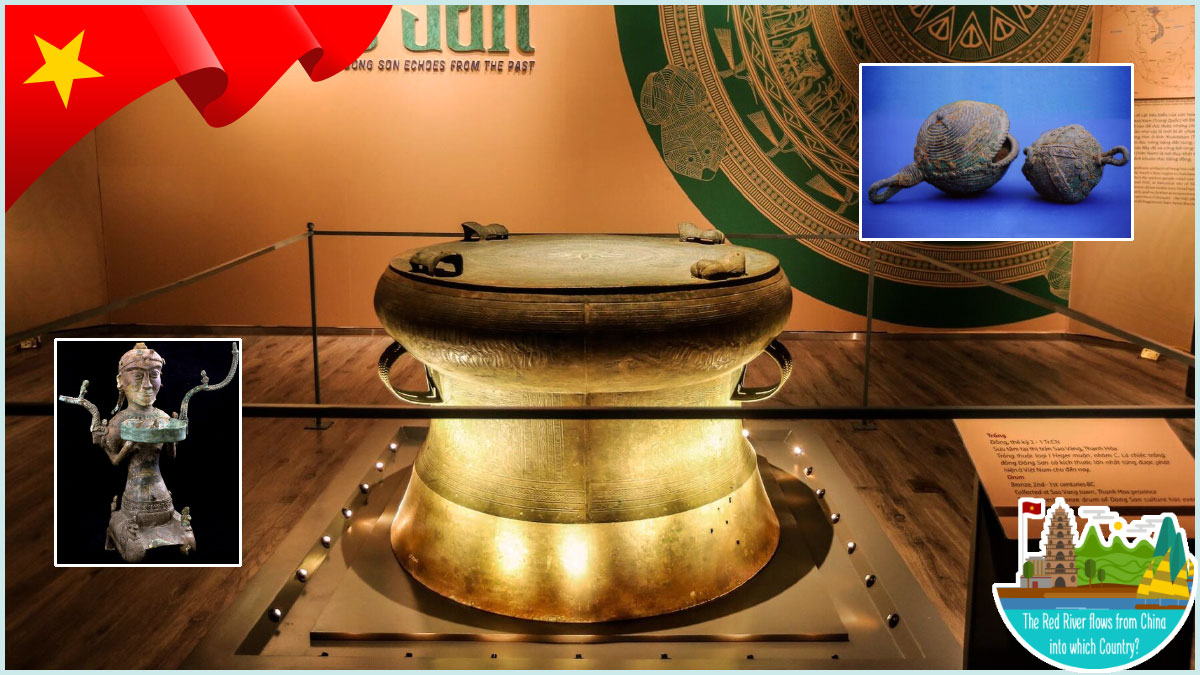
The Dong Son culture, which thrived around 800 BCE along the riverbanks, is renowned for its sophisticated bronze casting and agriculture, marking the beginning of a rich history of innovation and growth in the region. Archaeological sites such as Co Loa, the ancient capital of the Au Lac Kingdom, reveal the strategic importance of the Red River, not only as a source of life but also as a key trade route that linked Vietnam to neighboring cultures in China and Southeast Asia.
Throughout the centuries, the Red River has witnessed many of Vietnam’s most pivotal moments. In the 11th century, King Ly Thai To recognized the river’s importance as a lifeline for trade, communication, and defense when he established Hanoi (then called Thang Long) as Vietnam’s capital on its banks. Centuries later, during Vietnam’s long struggles for independence, the Red River region played a crucial role in various resistance movements against foreign invaders, from the Chinese to the French colonial powers. This historical context adds depth to the question, “the Red River flows from China into which country?” highlighting the waterway’s crucial role in shaping Vietnam’s history.
Economic Importance of the Red River
The Red River, flowing from China into Vietnam, is a vital economic artery for the latter country. As we explore “the Red River flows from China into which country,” it’s clear that Vietnam benefits significantly from this major waterway. Let’s dive into some key areas where the Red River makes a significant impact:
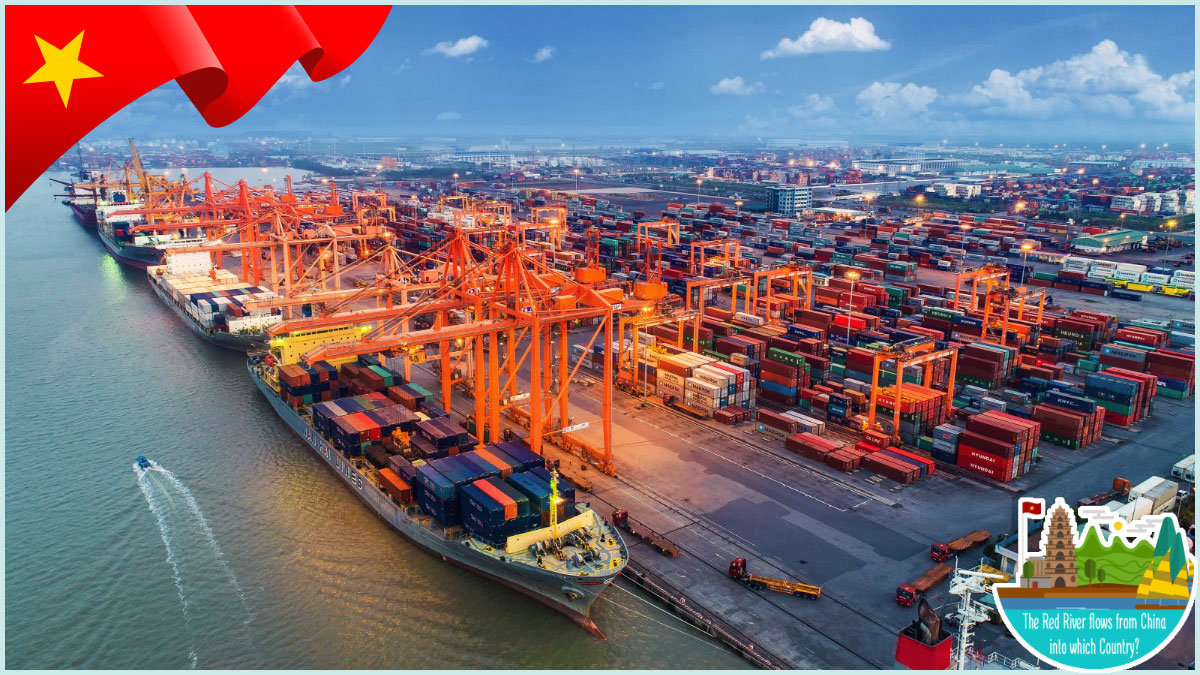
Agriculture
The Red River is a critical economic artery for Vietnam, supporting key industries such as agriculture, transportation, trade, and energy. The delta accounts for about 20% of Vietnam’s total rice production, which is significant for a country that is the world’s second-largest exporter of rice. In addition to rice, farmers in the delta grow crops like corn, vegetables, and fruits, contributing to both domestic food security and agricultural exports.
Transportation and trade
Beyond agriculture, the Red River plays a vital role in Vietnam’s transportation and trade infrastructure. It serves as a major waterway, facilitating the movement of goods and people between inland areas of northern Vietnam and the coast. The port of Hai Phong, located at the river’s mouth, is Vietnam’s second-busiest port, handling approximately 170 million tons of cargo annually. This port is a critical hub for both domestic and international trade, linking Vietnam to global markets, particularly in China, Japan, and Southeast Asia.
Energy
The Red River also contributes to Vietnam’s energy needs. Several hydroelectric plants, including the Thác Bà Hydropower Plant on the river’s tributary, generate significant amounts of electricity. The plant has an installed capacity of 120 megawatts (MW), supplying power to northern Vietnam and supporting the country’s industrialization efforts.
In short, the Red River’s economic significance spans across agriculture, trade, transportation, and energy, supporting millions of livelihoods and contributing billions of dollars to Vietnam’s economy each year.
Environmental Concerns and Conservation
While the Red River, which flows from China into Vietnam, is vital to Vietnam’s economy and culture, it also faces significant environmental challenges. Rapid industrialization, urbanization, and agricultural expansion in the Red River Delta have led to pollution, habitat destruction, and water quality degradation. The river’s ecosystem is under pressure from various sources of pollution, including industrial waste, agricultural runoff, and untreated sewage. These pollutants not only threaten the health of the river but also the livelihoods of the millions of people who depend on its waters.

Climate change poses another significant threat to the Red River and its delta. Rising sea levels and increased frequency of extreme weather events could lead to more severe flooding and saltwater intrusion, which would have devastating effects on agriculture and human settlements in the delta. To address these challenges, there are ongoing efforts to implement more sustainable water management practices, restore degraded ecosystems, and improve pollution control measures. Conservation of the Red River is crucial not only for preserving its ecological integrity but also for ensuring the continued well-being of the communities that rely on it. Understanding that the Red River flows from China into which country – Vietnam – is essential for coordinating international efforts to protect this vital waterway.
Tourism and Exploration Along the Red River
The Red River Delta, carved out by the river flowing from China into Vietnam, is not just a fertile breadbasket; it’s also a treasure trove of cultural and historical riches. This area, which provides the answer to “the Red River flows from China into which country?”, is a magnet for tourists. Visitors flock here to explore ancient temples, ornate pagodas, and picturesque traditional villages, all of which contribute significantly to the local tourism economy.
Cruises along the Red River
The Red River, which runs 1,149 kilometers (714 miles), is becoming more popular with tourists. Many wonder, “The Red River flows from China into which country?” The answer, of course, is Vietnam. As it flows through northern Vietnam, it offers beautiful farmland views and many chances to experience local culture and nature. Many tourists start their Red River journey in Hanoi, Vietnam’s capital, with a Hanoi day trip. This ancient city, with over 1,000 years of history, has many important historical places to visit, like the Tran Quoc Pagoda from the 6th century and the Temple of Literature from 1070.

Tourists can take boat trips on the Red River for a more immersive cultural experience. These trips often start near Chuong Duong Bridge and sail past old villages and historical sites dotting the riverbanks.
Some of the best places to visit are old villages like Bat Trang and Van Phuc, renowned for the pottery products and Vietnamese silk weaving, respectively. These villages have thrived for over a thousand years, and they offer visitors the chance to observe ancient crafts being practiced and to buy authentic handmade goods. Bat Trang pottery workshops alone attract thousands of tourists annually, with many visitors engaging in hands-on experiences, learning to mold clay and create their own ceramics.
There are also many ancient temples to see along the Red River. These temples show Vietnam’s spiritual history, dating back thousands of years. Some of the most noteworthy sites include Dam Temple, dedicated to the Water Fairy; Dai Lo Temple, constructed during the Tran Dynasty in the 1300s; and the Chu Dong Tu – Tien Dung temple, which harkens back to the ancient Van Lang era.
Sustainable Tourism
Eco-tourism is also flourishing along the Red River. The Sông Hồng (Red River) wetlands and mangrove forests, particularly within areas like Xuân Thủy National Park, are significant ecological zones. Xuân Thủy National Park, located at the mouth of the Red River, covers an area of approximately 12,000 hectares. This park is a crucial part of the broader estuary ecosystem, supporting diverse habitats including mangroves, intertidal zones, and feeding grounds for migratory birds. Birdwatching tours, as well as photography expeditions, are increasingly popular, drawing visitors from all over the world.
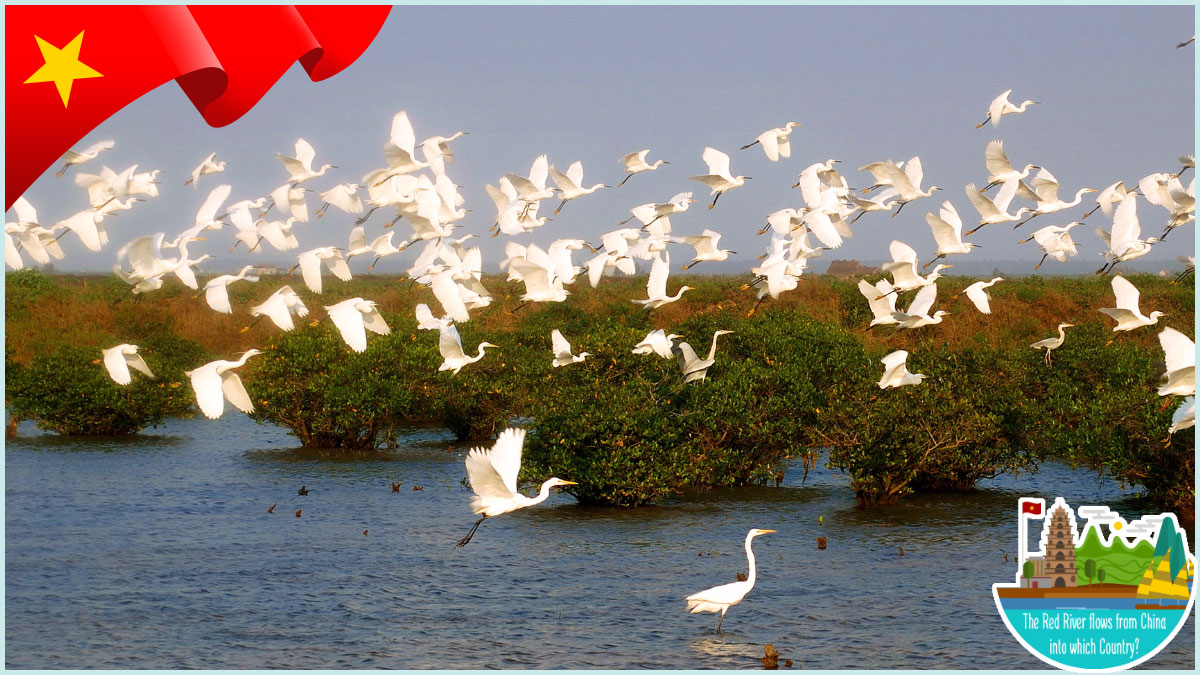
The rising interest in responsible travel has spurred initiatives to promote the Red River as a sustainable tourism destination. Local authorities are working closely with tour operators to ensure that tourism development is in harmony with environmental preservation. Eco-friendly boat tours, village homestays, and community-based tourism projects have been introduced, allowing visitors to contribute to the local economy while gaining a deeper understanding of Vietnam’s heritage and natural beauty.
From cultural exploration to eco-friendly adventures, the Red River offers a unique blend of experiences that cater to a wide variety of travelers, making it one of Vietnam’s emerging tourism hotspots.
The journey of the Red River from China into Vietnam is more than just a geographical passage; it is a story of life, culture, and history that has shaped the identity of the regions it touches. The answer to the question “the red river flows from china into which country” leads us to Vietnam, where the river becomes a vital lifeline, supporting agriculture, industry, and culture. From its role in creating the fertile Red River Delta, known as Vietnam’s “Rice Bowl,” to its historical and cultural significance, the Red River is an integral part of Vietnam’s heritage.
